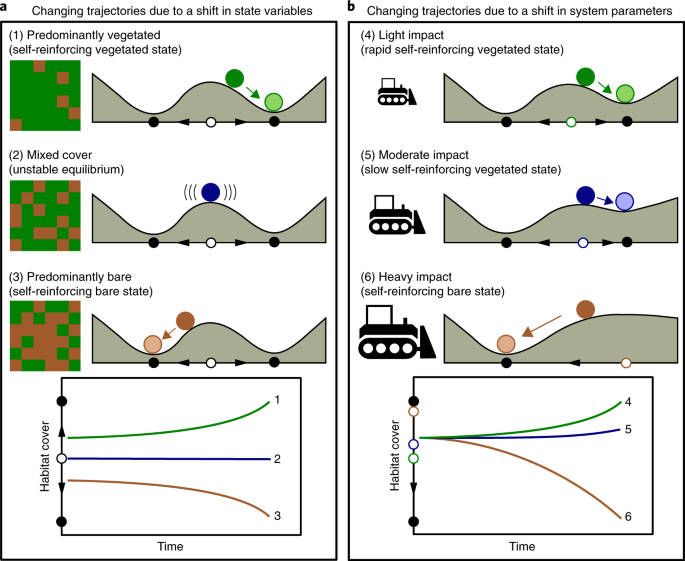You’ve decided it’s time to upgrade your lawn care game, and you’ve heard the buzz about zero-turn lawn mowers. But what exactly are they, and how do they work? In this beginner’s guide to zero-turn lawn mowers, we’ll break down everything you need to know about these innovative machines. From their unique turning capabilities to their efficient cutting power, you’ll gain a clear understanding of why zero-turn mowers are becoming a popular choice among homeowners and professionals alike. So, buckle up and get ready to navigate your way through the world of zero-turn lawn mowers.
What is a Zero-Turn Lawn Mower?
Definition of a Zero-Turn Lawn Mower
A zero-turn lawn mower is a type of mower that is designed for efficient and precise mowing of large areas of grass. Unlike traditional mowers, zero-turn mowers have a turning radius of zero degrees, which allows them to pivot around their axis and navigate tight corners and obstacles with ease. These mowers are known for their exceptional maneuverability and are commonly used by homeowners, landscaping professionals, and groundskeepers.
How Does a Zero-Turn Lawn Mower Work?
Zero-turn lawn mowers utilize a dual transmission system that controls the movement of the rear wheels independently. By using two levers or steering handles, the operator can control the direction and speed of each rear wheel individually. This differential steering system allows the mower to rotate, turn, and pivot on the spot, enabling precise maneuverability and the ability to navigate around obstacles smoothly. The rear wheels also drive the machine, providing the necessary power to move forward or backward. This combination of independent wheel control and rear-wheel drive makes zero-turn mowers highly agile and efficient in mowing grass.
Advantages of Using a Zero-Turn Lawn Mower
Improved Maneuverability
One of the key advantages of using a zero-turn lawn mower is its exceptional maneuverability. With a zero-degree turning radius, these mowers can effortlessly navigate around trees, flower beds, and other obstacles in your yard. The ability to make precise turns and quickly change directions saves you time and eliminates the need for time-consuming trimming and edging.
Time Efficiency
Zero-turn lawn mowers are designed for speed and efficiency. The combination of their wide cutting decks and high-speed capabilities allows you to cover larger areas of grass in less time compared to traditional mowers. The zero-turn feature also eliminates the need for multiple passes or maneuvers, further increasing productivity and reducing the overall time spent on mowing.
Increased Precision
The precise control offered by zero-turn mowers ensures a perfectly manicured lawn. The ability to tackle tight spots and intricate landscapes with ease enables you to mow closer to obstacles, resulting in a cleaner and more professional-looking finish. The improved precision also reduces the need for post-mowing touch-ups or trimming, saving you both time and effort.
Versatility in Terrain
Zero-turn lawn mowers are designed to handle various types of terrain, including uneven surfaces, inclines, and rough patches. The independent control of each rear wheel allows for easy navigation over bumps and dips, ensuring a consistent and even cut across your entire lawn. This versatility makes zero-turn mowers an excellent choice for yards with challenging topography.
Enhanced Comfort
Many zero-turn mowers come with features designed for user comfort. These can include padded seats, adjustable armrests, and ergonomic controls. The comfortable seating position, along with reduced vibration and noise levels compared to traditional mowers, minimizes fatigue and provides a more enjoyable mowing experience. Additionally, the ability to mow efficiently and quickly can also reduce the overall time spent in the hot sun, further enhancing comfort.
Types of Zero-Turn Lawn Mowers
Residential Zero-Turn Lawn Mowers
Residential zero-turn lawn mowers are designed for homeowners with medium to large-sized yards. These mowers typically have cutting decks ranging from 42 to 60 inches, allowing them to cover more ground with each pass. They often have lower horsepower engines compared to commercial models but still provide sufficient power for residential use. Residential zero-turn mowers are generally more affordable and user-friendly, making them an ideal choice for homeowners who prioritize efficiency and convenience.
Commercial Zero-Turn Lawn Mowers
Commercial zero-turn lawn mowers are heavy-duty machines designed for professional landscapers and groundskeepers. These mowers have larger cutting decks, ranging from 60 to 80 inches, allowing for quick and efficient mowing of extensive areas. They are equipped with powerful engines to handle frequent and demanding use. Commercial models often feature reinforced frames, heavy-duty transmissions, and advanced suspension systems to withstand the rigors of commercial applications. While they may come at a higher price point, commercial zero-turn mowers deliver exceptional performance and durability for professional use.
Choosing the Right Zero-Turn Lawn Mower
Yard Size and Terrain
When choosing a zero-turn lawn mower, consider the size of your yard and the type of terrain you have. For smaller yards with fewer obstacles, a residential-sized mower with a smaller cutting deck may be suitable. However, larger yards with challenging topography may require a larger cutting deck and a more powerful engine to ensure efficient and effective mowing.
Cutting Deck Size
The cutting deck size determines the width of grass that can be cut in a single pass. Consider the size of your yard and your desired mowing time when selecting a cutting deck size. A larger cutting deck will cover a larger area in a shorter time, while a smaller deck may be more maneuverable in tighter spaces. Keep in mind that larger cutting decks may not be as maneuverable as smaller ones.
Engine Power
The engine power of a zero-turn mower determines its performance and capacity to handle various mowing conditions. For residential use, engines with horsepower ranging from 15 to 25 are typically sufficient. Commercial models often have higher horsepower engines, enabling them to handle heavy-duty mowing tasks. Consider the types of grass and terrain in your yard to determine the appropriate engine power for your needs.
Comfort Features
Comfort features can greatly enhance your mowing experience. Look for mowers with padded seats, adjustable armrests, and ergonomic controls to reduce fatigue and improve comfort during long mowing sessions. Consider models with vibration-reducing features and low-noise operation for a smoother and quieter ride.
Brand Reputation and Warranty
Research the reputation of different brands before purchasing a zero-turn mower. Look for well-established brands with a proven track record of producing reliable and high-quality machines. Also, consider the warranty offered by the manufacturer as it reflects their confidence in the product. A comprehensive warranty can provide peace of mind and protection against potential defects or issues.
Operating a Zero-Turn Lawn Mower
Basic Controls and Functions
Before operating a zero-turn mower, familiarize yourself with the basic controls and functions. Most models have two steering handles or levers, which control the speed and direction of each rear wheel. By pushing one handle forward and the other backward, you can turn the mower on the spot or navigate in tight spaces. Additionally, zero-turn mowers typically have a throttle lever or pedal, a blade engagement switch, and a parking brake.
Safety Precautions
Prioritize safety when operating a zero-turn mower. Always wear appropriate safety gear, including safety glasses, hearing protection, and non-slip footwear. Ensure that the cutting blades are disengaged when not in use, and never operate the mower with faulty or damaged safety features. Additionally, be cautious of your surroundings and keep pets and children away from the mowing area.
Starting and Stopping
To start a zero-turn mower, follow the manufacturer’s instructions. Typically, you will need to be seated with the parking brake engaged and any attachments disengaged. Activate the choke as instructed, turn the key or use the electric start button, and release the choke once the engine is running smoothly. To stop the mower, disengage the blades, set the parking brake, and turn off the engine following the manufacturer’s guidelines.
Maneuvering Techniques
Mastering the maneuvering techniques of a zero-turn mower is crucial for achieving a clean and even cut. Practice using the steering handles or levers to make smooth turns and navigate obstacles. Start with slow and deliberate movements, gradually increasing speed as you gain confidence. Use overlapping mowing paths to avoid missed spots and ensure consistent coverage.
Maintenance and Cleaning
Regular maintenance and cleaning are essential for the proper functioning and longevity of your zero-turn mower. Follow the manufacturer’s guidelines for maintenance tasks such as oil changes, filter replacements, and blade sharpening. Keep the cutting deck clean and free from debris to prevent build-up and maintain optimal cutting performance. Regularly inspect and clean the air and fuel filters to ensure optimal engine performance. Store the mower in a dry and secure location to protect it from the elements.
Tips for Using a Zero-Turn Lawn Mower
Start Slowly and Practice
If you are new to using a zero-turn lawn mower, start slowly and practice in an open area before tackling your entire yard. Get comfortable with the controls and familiarize yourself with the mower’s handling. Gradually increase your speed and practice maneuvering around obstacles to build confidence and improve efficiency.
Avoid Mowing Wet Grass
It is generally recommended to avoid mowing wet grass with a zero-turn mower. Wet grass can clog the cutting deck, resulting in poor performance and potential damage to the machine. Wet grass can also cause the mower to lose traction, leading to uneven mowing and potential slipping hazards. Wait for the grass to dry before mowing to ensure optimal cutting results and a safer mowing experience.
Set the Cutting Height Correctly
Adjust the cutting height of your zero-turn mower based on the recommended settings for your type of grass. Different grass varieties thrive at specific cutting heights, and improper adjustment can result in overcutting or scalp marks on your lawn. Consult the mower’s manual or seek guidance from a local gardening expert to determine the appropriate cutting height for your grass.
Overlap Mowing Paths
To ensure thorough coverage and an even cut, overlap your mowing paths. Aim for a 20-30% overlap between each pass to avoid leaving uncut strips of grass. This technique helps eliminate unsightly lines and ensures a consistent finish across your entire lawn. Overlapping also avoids excessive stress on the mower’s engine and cutting blades, promoting optimal performance and longevity.
Maintain Blades and Deck
Regularly inspect and maintain the cutting blades and deck of your zero-turn mower. Sharpen the blades as needed to ensure clean and precise cutting. Dull blades can tear the grass instead of cleanly cutting it, leading to a rough and uneven appearance. Additionally, clean the cutting deck after each use to remove grass clippings and debris, preventing buildup that can affect cutting performance.
Regularly Check and Clean Filters
Air and fuel filters play a crucial role in the performance of your zero-turn mower’s engine. Regularly check these filters and clean or replace them as recommended by the manufacturer. Clogged or dirty filters can restrict airflow and fuel flow, compromising the engine’s efficiency and power output. Clean filters ensure optimal engine performance and extend the lifespan of your mower.
Store Properly
When not in use, store your zero-turn mower in a dry and secure location. Exposure to the elements can lead to rust and corrosion, affecting the mower’s performance and lifespan. Ideally, store the mower in a clean and well-ventilated garage or shed. Protect the machine with a fitted cover to safeguard it from dust and debris.
Common Issues and Troubleshooting
Uneven Cutting
If your zero-turn mower is leaving uneven patches of grass, several factors could be causing the issue. Check that the cutting blades are sharp and balanced. Dull blades can lead to an inconsistent cut. Ensure that the cutting deck is leveled properly. An uneven deck can cause the blades to cut at different heights. Additionally, consider adjusting the mower’s speed and the overlap between mowing paths for more even coverage.
Engine Problems
If you experience engine-related issues with your zero-turn mower, start by checking the fuel level and quality. Ensure that you are using fresh, clean fuel and that the fuel tank is adequately filled. Check the spark plugs for fouling or damage and clean or replace them as necessary. If the engine continues to malfunction, consult a professional or authorized service center for diagnosis and repair.
Electrical System Malfunctions
Electrical system malfunctions can occur in zero-turn mowers, primarily related to the battery, wiring, or switches. Check the battery terminals for corrosion or loose connections. Clean the terminals and ensure a secure connection. Inspect the wiring for any visible damage or loose connections. If the issue persists, consult a qualified technician for further troubleshooting and repair.
Steering and Handling Issues
If you encounter steering or handling problems with your zero-turn mower, inspect the tires for proper inflation and wear. Uneven or low tire pressure can affect the mower’s stability and maneuverability. Check the steering linkage for any damage or loose components. Tighten or repair as necessary. If issues persist, contact a professional technician for further diagnosis and repair.
Safety Considerations for Zero-Turn Lawn Mowers
Wear Appropriate Safety Gear
Always wear the appropriate safety gear when operating a zero-turn lawn mower. This includes safety glasses or goggles to protect your eyes from debris, hearing protection to safeguard against noise exposure, and sturdy non-slip footwear to ensure traction and prevent slips or falls. Additionally, consider wearing gloves to improve grip and protect your hands during maintenance tasks.
Keep Pets and Children Away
Ensure that pets and children are kept at a safe distance while operating a zero-turn mower. The mower’s high-speed capability and maneuverability can be dangerous if anyone is in the mowing area. Establish clear boundaries and communicate the importance of staying away from the mower to prevent accidents or injuries.
Avoid Steep Slopes and Ditches
Zero-turn mowers are not designed for use on steep slopes or inclines. These machines have a higher risk of tipping or slipping in such conditions, posing a safety hazard to the operator. Avoid mowing on excessively steep slopes or in ditches to prevent accidents and maintain optimal stability and control of the mower.
Stay Alert and Focused
Maintain focus and stay alert while operating a zero-turn mower. Avoid distractions such as phone calls or loud music that can impede your ability to hear potential hazards or engine issues. Keep a keen eye on your surroundings, continuously scanning for obstacles, and be prepared to react quickly if needed. Avoid operating the mower when fatigued, as it can impair your judgment and reflexes.
Maintaining and Servicing Your Zero-Turn Lawn Mower
Regular Cleaning
Regularly cleaning your zero-turn lawn mower is essential for maintaining its performance and longevity. After each use, remove grass clippings and debris from the cutting deck, wheels, and any other accessible areas. This prevents buildup that can lead to engine overheating and obstructed cutting performance. Use a hose or pressure washer, taking care to avoid getting water into the engine or electrical components.
Sharpening Blades
Maintain sharp blades for optimal cutting performance. Dull blades can tear the grass instead of providing clean, efficient cuts. Regularly inspect the cutting blades for signs of wear or damage, and sharpen or replace them as necessary. Follow the manufacturer’s instructions or seek professional assistance for blade sharpening to ensure proper balance and alignment.
Changing Oil and Filters
Regularly changing the oil and filters of your zero-turn mower is essential for engine health and performance. Consult the manufacturer’s guidelines for recommended oil change intervals and procedures. Typically, the oil should be changed at least once per season or after a specific number of operating hours. Additionally, regularly inspect and clean or replace the air and fuel filters according to the manufacturer’s recommendations.
Periodic Maintenance Tasks
In addition to regular oil changes, filter replacements, and blade sharpening, there are other periodic maintenance tasks to consider. These may include inspecting and tightening bolts and fittings, lubricating moving parts, and checking tire pressure and wear. Follow the manufacturer’s guidelines for specific maintenance tasks and intervals to keep your zero-turn mower in optimal condition.
Professional Servicing
For more complex maintenance or repairs, consider bringing your zero-turn mower to a professional servicing center. These experts have the knowledge and experience to diagnose and address any issues accurately. Professional servicing can help extend the lifespan of your mower and ensure that it operates safely and efficiently. Additionally, many manufacturers require professional servicing for warranty purposes, so maintaining a servicing record is crucial.
Choosing Accessories for Your Zero-Turn Lawn Mower
Mulching Kits
Mulching kits are accessories that attach to the cutting deck of your zero-turn mower, allowing for finely chopped grass clippings to be spread evenly across the lawn. This promotes healthier grass growth by returning nutrients to the soil. Mulching kits typically consist of special mulching blades and a plug that closes off the discharge chute, redirecting the clippings back into the cutting deck.
Bagging Systems
Bagging systems are attachments that enable the collection of grass clippings during mowing. They consist of a bagging unit that attaches to the rear of the zero-turn mower and a chute that directs clippings into the bag. Bagging systems are ideal for those who prefer a clean and debris-free lawn or for mowing areas with excessive grass growth.
Lighting and Safety Equipment
To enhance safety and visibility, consider installing lighting and safety equipment on your zero-turn mower. LED or halogen lights can improve visibility during early morning or late afternoon mowing sessions, allowing you to see obstacles and potential hazards clearly. Reflective safety decals or striping can also be added to increase visibility to others in low-light conditions.
Covers and Storage Accessories
Protecting your zero-turn mower from the elements is essential for maintaining its condition and prolonging its lifespan. Invest in a cover specifically designed for your model to shield it from dust, UV rays, and moisture when not in use. Additionally, storage accessories such as ramps, lifts, or dollies can make it easier to maneuver and transport your mower, simplifying maintenance and storage tasks.
In conclusion, a zero-turn lawn mower offers numerous advantages over traditional mowers. Their exceptional maneuverability, time efficiency, increased precision, versatility in terrain, and enhanced comfort make them a popular choice for both homeowners and professional landscapers. When selecting a zero-turn mower, consider your yard size and terrain, cutting deck size, engine power, comfort features, brand reputation, and warranty. Operating and maintaining a zero-turn mower require proper techniques, regular cleaning and maintenance, and adherence to safety precautions. By following these guidelines and carefully choosing accessories, you can enjoy a beautifully manicured lawn and efficient mowing experience with your zero-turn lawn mower.





